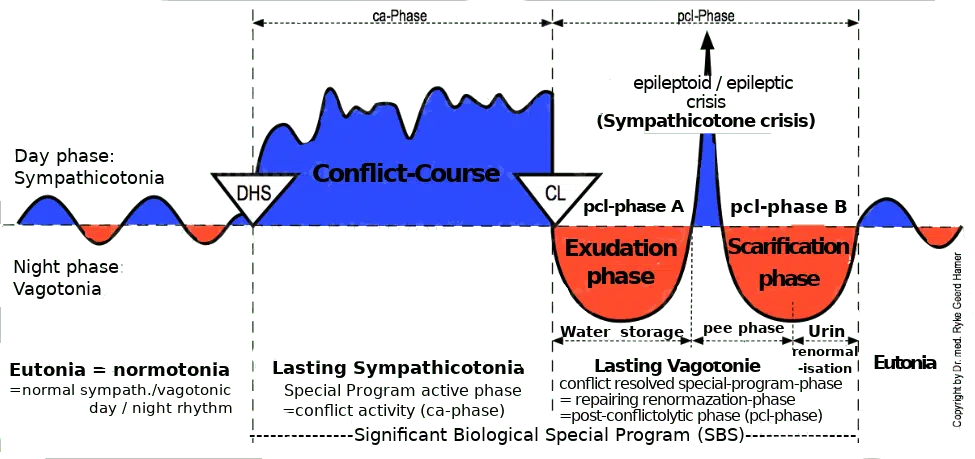Brainstem = Old Brain = Inner Germ Layer = Endoderm

Lower Small Intestine Carcinoma – Diagnostic Chart
Conflict of being unable to digest a morsel, indigestible anger, and usually starvation fear in the broadest sense.
Example: A master hairdresser has to close her second store several times temporarily, later permanently, because her best employees always left her and switched to the competition, despite her previous assurances.
–
HH in the brainstem (pons), ventro-lateral (inferior-lateral) on the left side
The small intestine has grown developmentally very rapidly in a short time. Therefore, the flat-growing small intestine adeno-Ca of the resorptive grade is widely spaced and consists of only a few intestinal cylindrical epithelial-Ca layers. However, the carcinomas may become progressively thicker at the end of the ileum and almost reach cauliflower shape.
Bloody, tuberculous-caseating, necrotizing (if TBC mycobacteria present) rejection, so-called “plaques,” fragile adeno-Ca plates, with mucus. However, also thick parts in the so-called “Ileitisterminalis” the so-called “M. Crohn.” The shedding of bloody mucus and mucus-producing cylinder epithelium, which we have so far taken to be a disease (Crohn’s disease), has, in each case, been only the healing phase (with or without TBC). In which we were asymptomatic and believed ourselves healthy, the conflict-active phase was actually the growth of a tumor.
Centralization
To be able to absorb better (=absorb) a morsel that has already been taken.
TODAY: 28
LAST 30 DAYS: 3.067
THIS YEAR: 33.286
TOTAL: 152.401
| Cookie | Duration | Description |
|---|---|---|
| cookielawinfo-checkbox-analytics | 11 months | This cookie is set by GDPR Cookie Consent plugin. The cookie is used to store the user consent for the cookies in the category "Analytics". |
| cookielawinfo-checkbox-functional | 11 months | The cookie is set by GDPR cookie consent to record the user consent for the cookies in the category "Functional". |
| cookielawinfo-checkbox-necessary | 11 months | This cookie is set by GDPR Cookie Consent plugin. The cookies is used to store the user consent for the cookies in the category "Necessary". |
| cookielawinfo-checkbox-others | 11 months | This cookie is set by GDPR Cookie Consent plugin. The cookie is used to store the user consent for the cookies in the category "Other. |
| cookielawinfo-checkbox-performance | 11 months | This cookie is set by GDPR Cookie Consent plugin. The cookie is used to store the user consent for the cookies in the category "Performance". |
| viewed_cookie_policy | 11 months | The cookie is set by the GDPR Cookie Consent plugin and is used to store whether or not user has consented to the use of cookies. It does not store any personal data. |
You’ll be informed by email when we post new articles and novelties. In every email there is a link to modify or cancel your subscription.